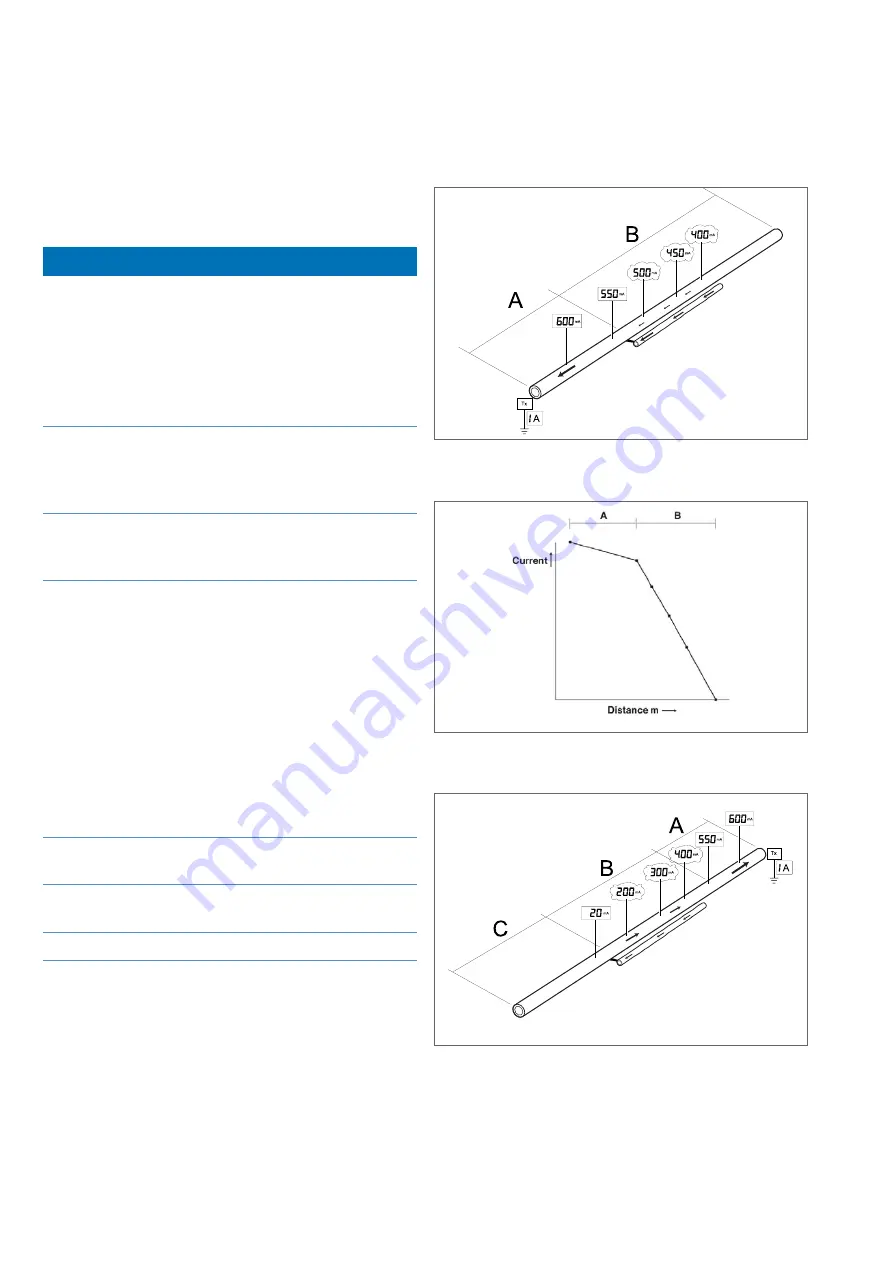
18 PCM
+
Operation Manual
Section 6 – Applications
This section demonstrates how surveyors can use
the PCM
+
system in real-world situations.
6.1 Parallel Pipes
New distribution pipe with the old pipe running parallel
and about 30cm (12 inches) away.
A 1 Amp signal was applied
To make the explanation easier the pipe has been divided
into section A & B. This is demonstrated in Figure 6.1.
Section A Good peak and null locate, with peak and
null locates in the same position. Results
indicate a good coating on the pipe
(600 and 550mA).
Section B Poor peak and null locate shifted to one side
from the previous alignment. Readings start
to decrease rapidly.
In this case the old pipe had been shorted to the new
pipe. The poor coating on the old pipe provided a good
path for the PCM
+
Transmitter current.
This is indicated by the locate being offset to one side and
the rapid decrease in current reading.
When plotted the graph illustrated this effect with the
bend indicating the position of the short or contact.
To verify the fault location the transmitter was repositioned
to the other end of the pipeline and the following results
obtained.
Section A Good Peak and Null locate, reading
decreasing at a steady rate.
Section B Poor peak and Null locate with a sharp fall
in current reading.
Section C Short/Contact.
The easiest path for the current to flow is down the old
discarded pipe. As this is in the opposite direction to the
flow on the new pipe it has a cancellation effect which
accounts for the sharp drop in reading.
The short would be at the point where the current drops
close to zero.
The graph in Figure 6.4 illustrates this effect.
Figure 6.1: Parallel Pipes Example 1
Figure 6.2: Example 1 interpretation
Figure 6.3: Parallel Pipes Example 2










































